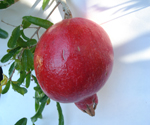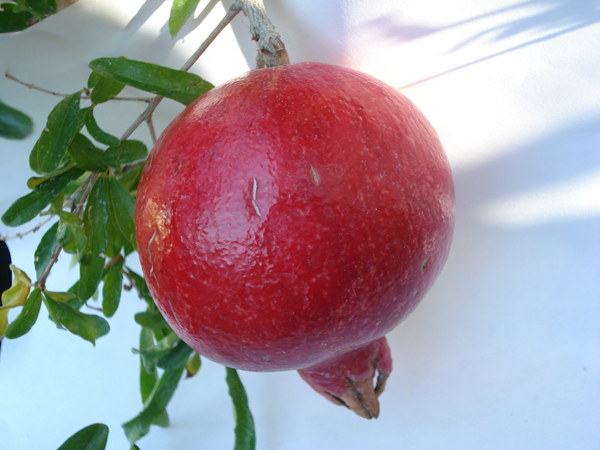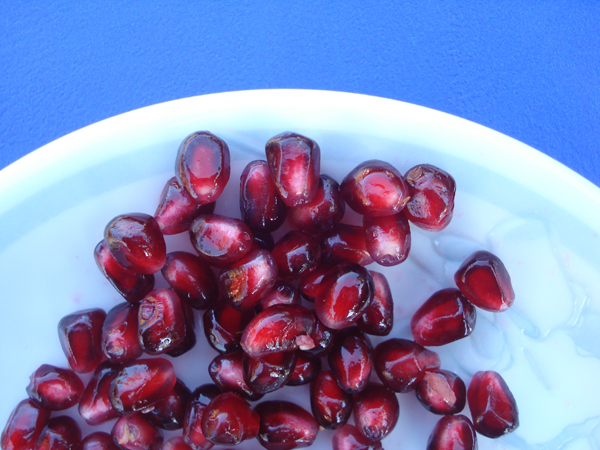
Growth Habits: The pomegranate is a neat, rounded shrub or small tree that can grow to 20 or 30 ft., but more typically to 12 to 16 ft. in height. Dwarf varieties are also known. It is usually deciduous, but in certain areas the leaves will persist on the tree.
The trunk is covered by a red-brown bark which later becomes gray. The branches are stiff, angular and often spiny. There is a strong tendency to sucker from the base. Pomegranates are also long-lived. There are specimens in Europe that are known to be over 200 years of age.
Fruit: The nearly round, 2-1/2 to 5 in. wide fruit is crowned at the base by the prominent calyx. The tough, leathery skin or rind is typically yellow overlaid with light or deep pink or rich red. In each sac there is one angular, soft or hard seed. High temperatures are essential during the fruiting period to get the best flavor. The pomegranate may begin to bear in 1 year after planting out, but 2-1/2 to 3 years is more common. |

